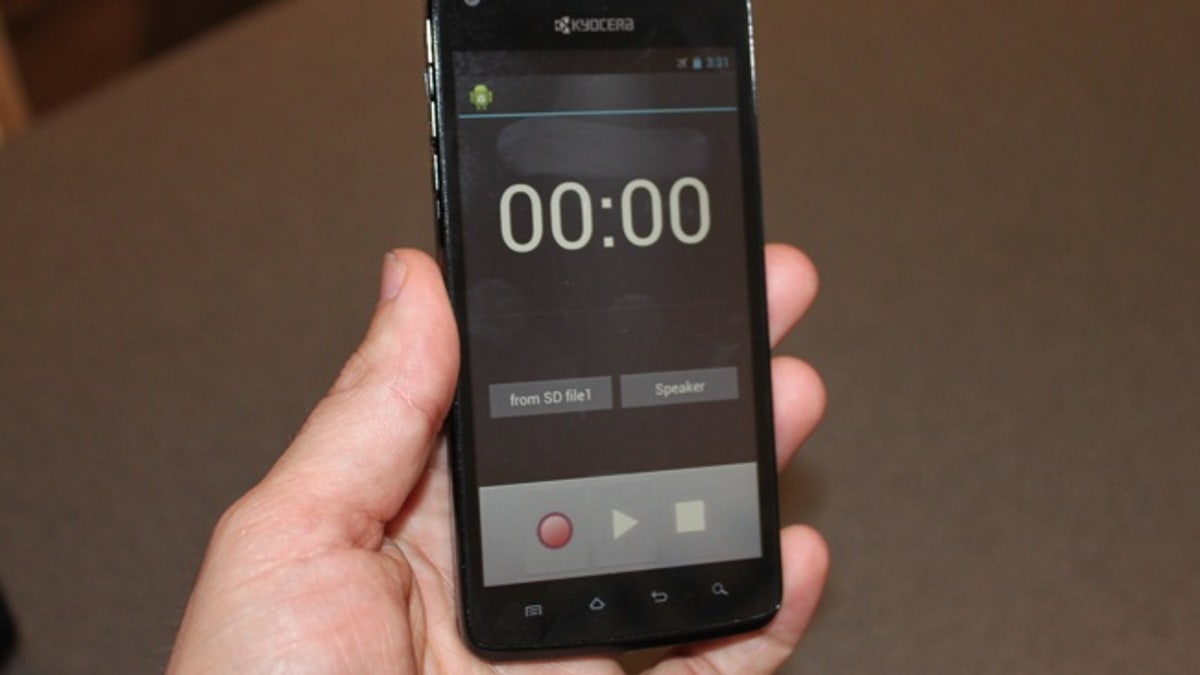
Where's the hole? That's the first thing we asked ourselves when picking up Kyocera's concept phone that uses tissue conduction technology. What's that, you ask? Instead of a traditional speaker, this prototype Android handset being shown at CTIA Wireless 2012 uses a ceramic transducer to pump audio directly into your ear drum. The idea is that you can hear other callers even when there's lots of ambient noise. And it works.
All we had to do was put the tissue conduction phone up to our ear, and the vibrations coming from the transducer resulted in clear audio. Even when we put our finger in our ear, we could still the audio file being played on the handset. Then Kyocera invited us to don a pair of headphones, and the sound still came through loud and clear when we touched the phone to the cans--or even to our neck underneath the headphones. This tech is so effective it's almost creepy.
When held at a distance, the tissue conduction phone didn't get very loud, but Kyocera assured us that by the time this technology comes to market the company will pair it with a traditional speaker on the back of devices for speakerphone calls and listening to music.
Given that Sprint is working on rolling out HD Voice capability on handsets like the HTC EVO 4G LTE, tissue conduction could be a pretty sweet complementary technology. Who knows, people might even decide to make calls again instead of texting.
